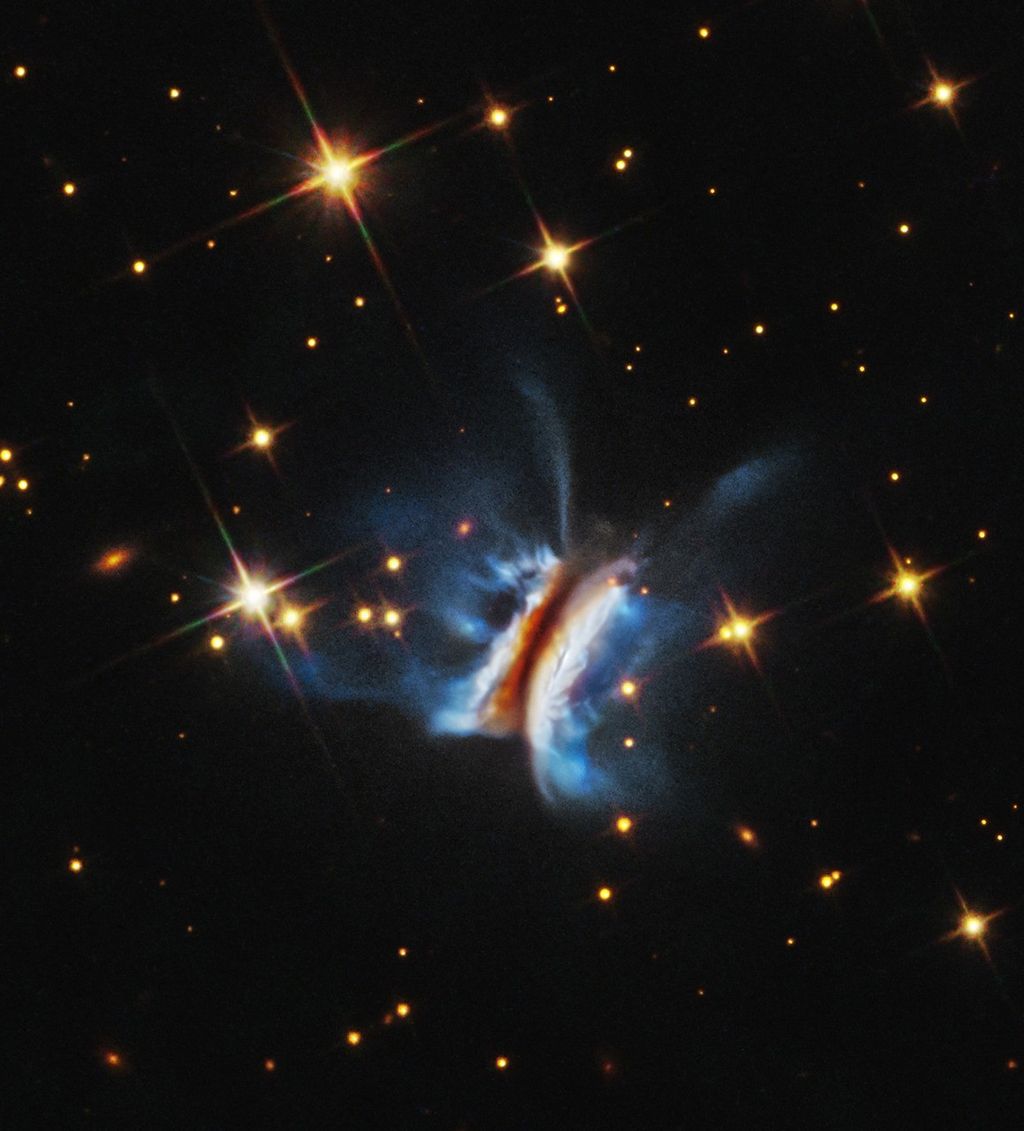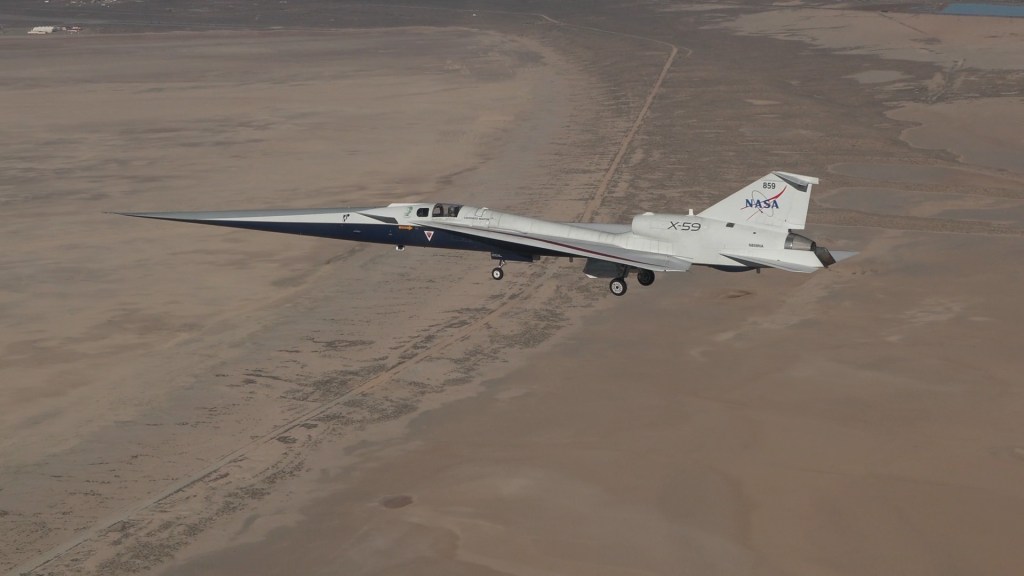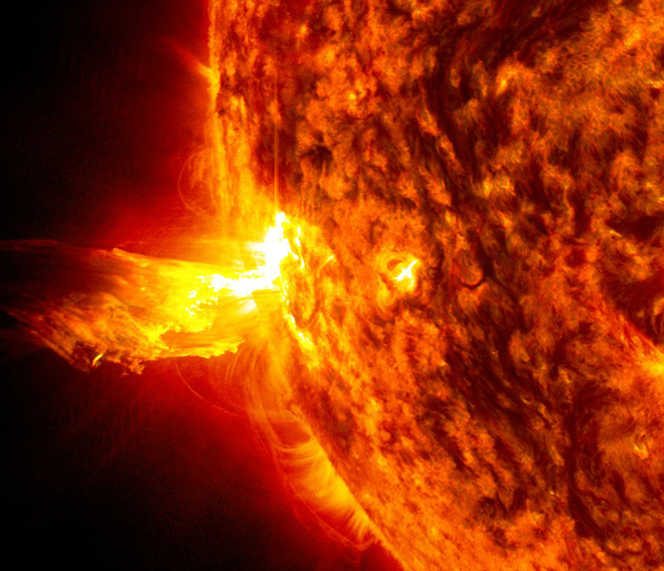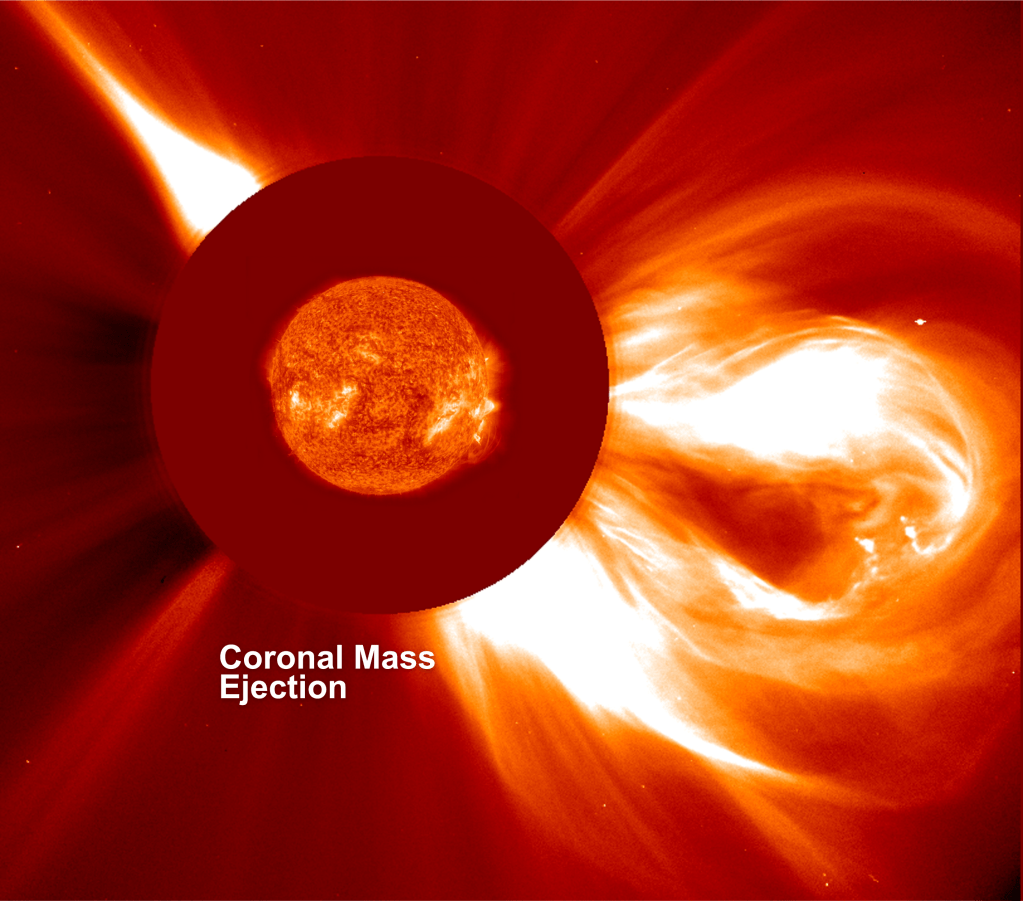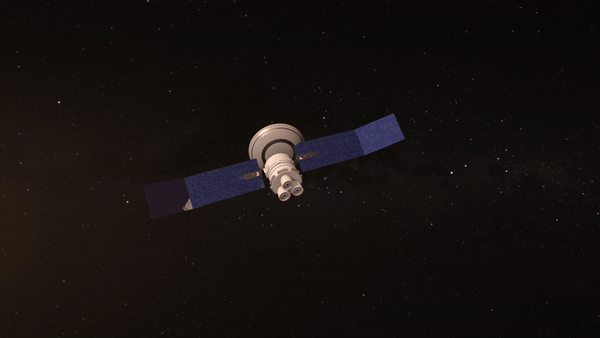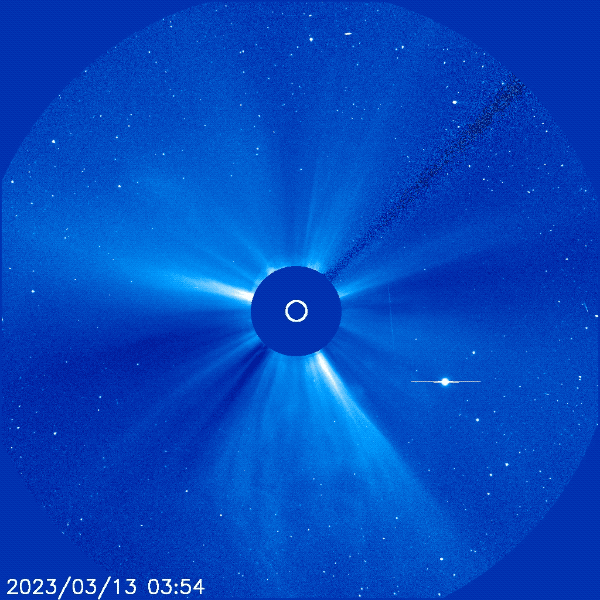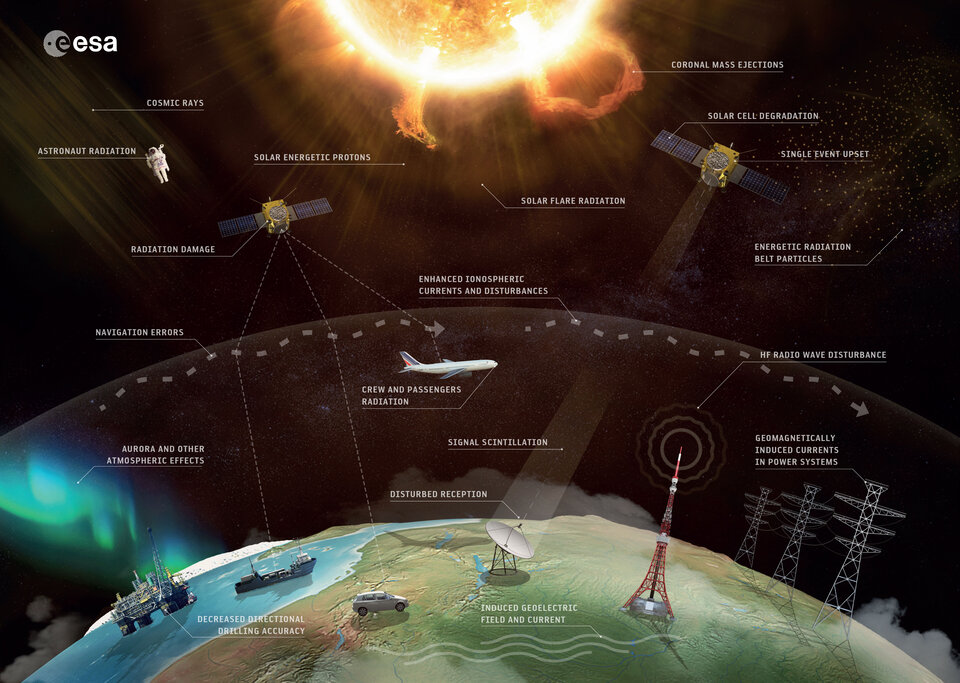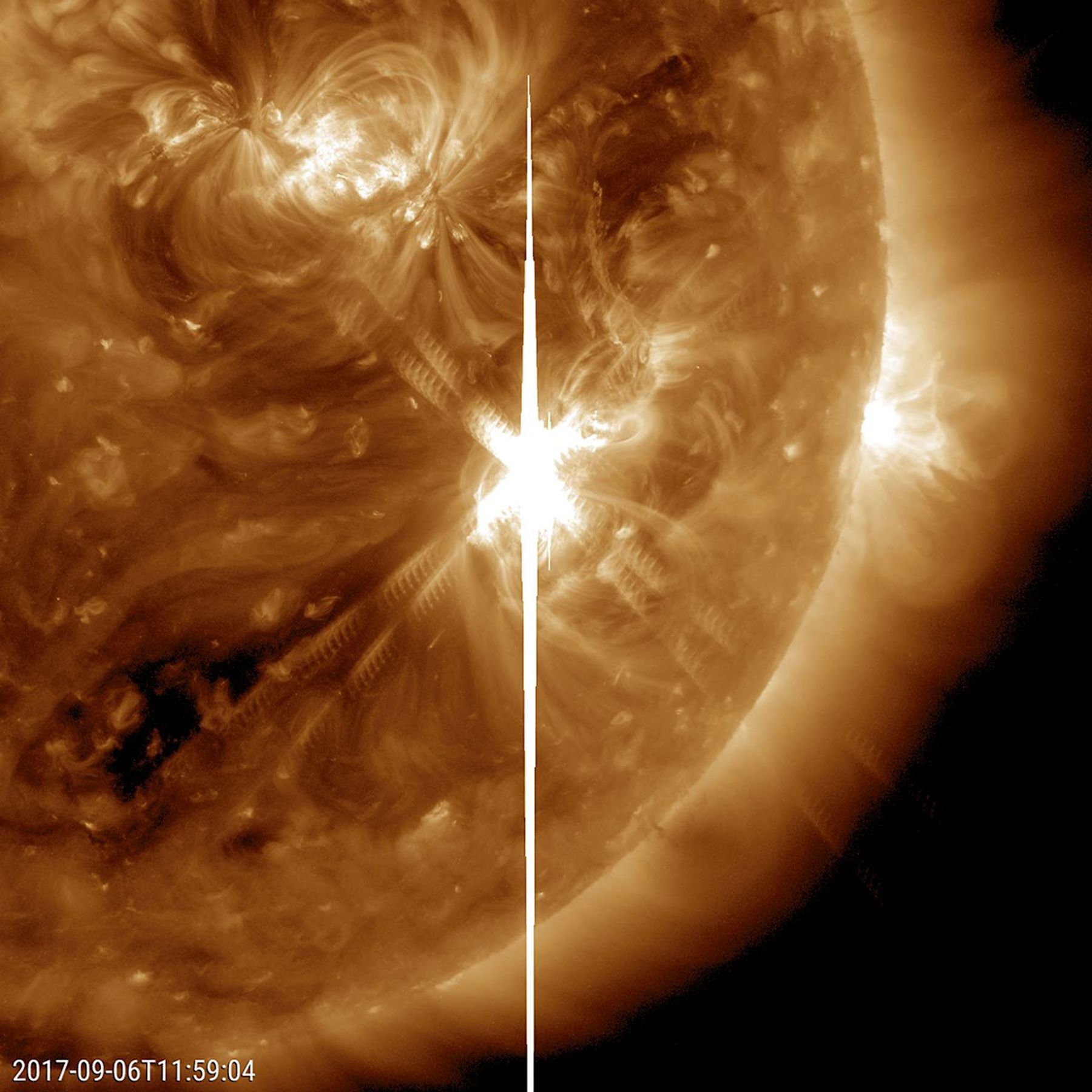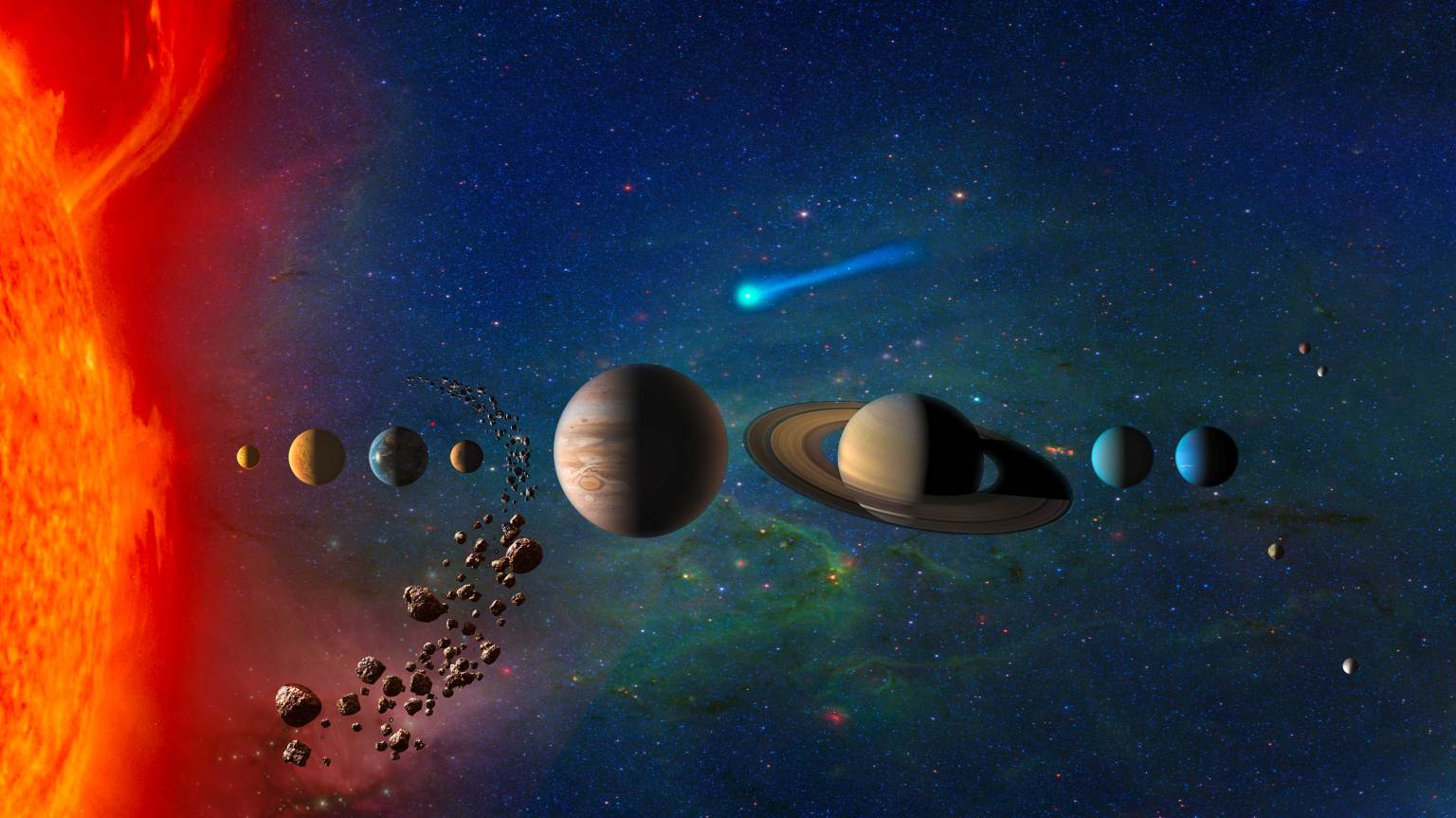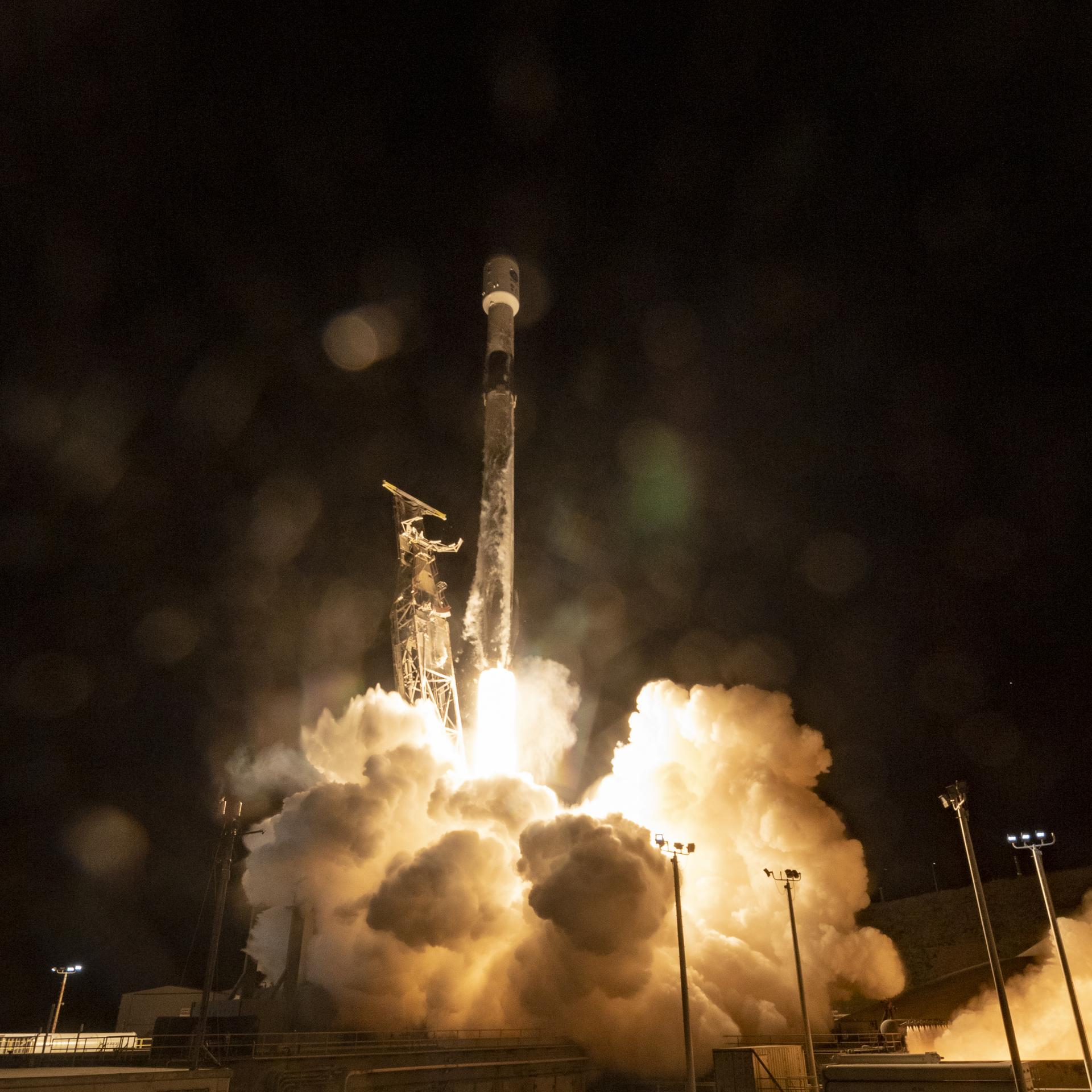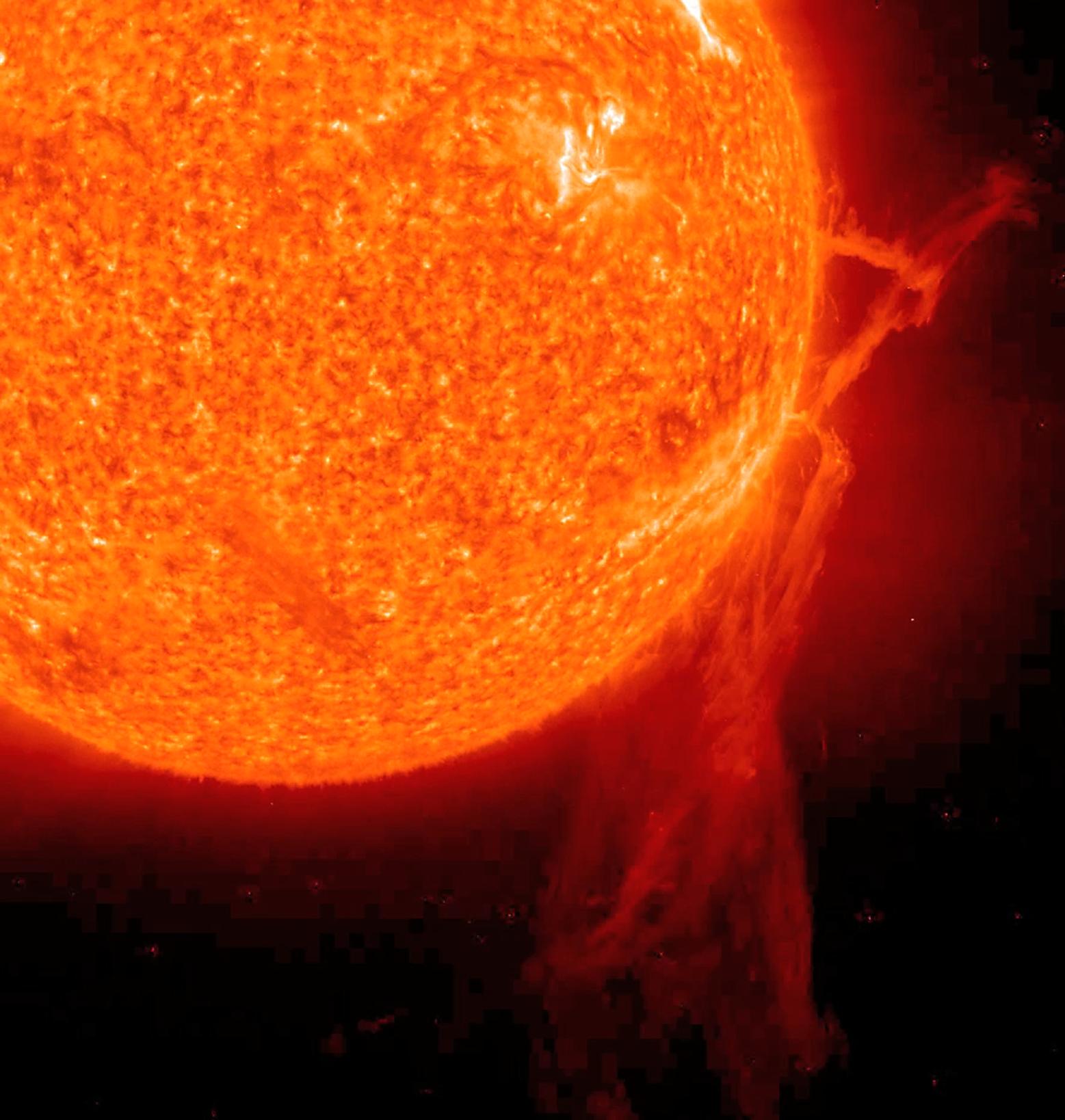Solar Storms
-
What is a solar storm?
A solar storm is a sudden explosion of particles, energy, magnetic fields, and material blasted into the solar system by the Sun.
Image: A cloud of material erupts from the Sun. Credit: NASA/ESA/SOHO -
How does a solar storm affect us?
When directed toward Earth, a solar storm can create a major disturbance in Earth’s magnetic field, called a geomagnetic storm, that can produce effects such as radio blackouts, power outages, and beautiful auroras. They do not cause direct harm to anyone on Earth, however, as our planet’s magnetic field and atmosphere protect us from the worst of these storms.
-
What causes a solar storm?
The Sun creates a tangled mess of magnetic fields — kind of like a disheveled head of hair after a fitful night of sleep. These magnetic fields get twisted up as the Sun rotates — with its equator rotating faster than its poles. Solar storms typically begin when these twisted magnetic fields on the Sun get contorted and stretched so much that they snap and reconnect (in a process called magnetic reconnection), releasing large amounts of energy.
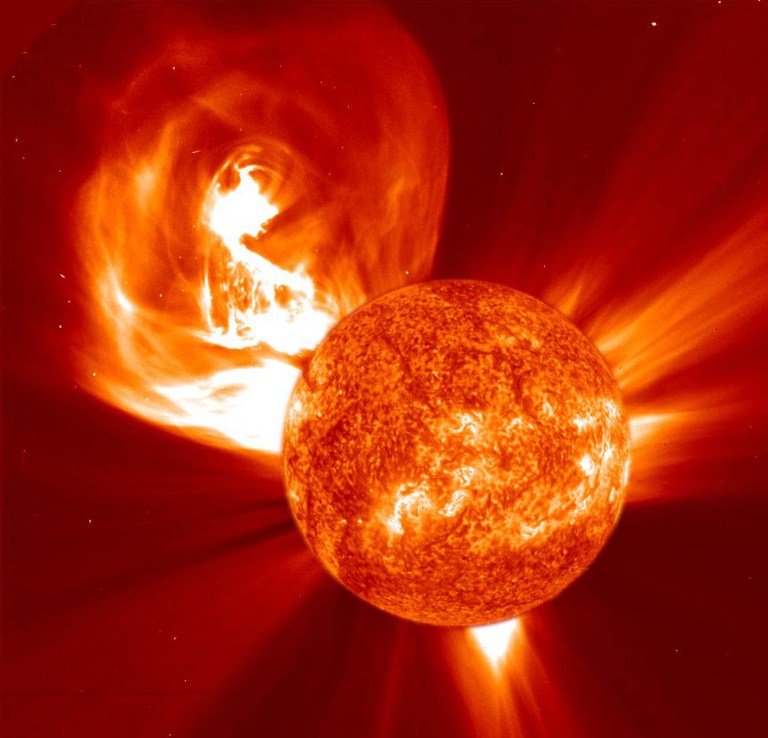

These powerful eruptions can generate any or all of the following:
- a bright flash of light called a solar flare.
- a radiation storm, or flurry of solar particles propelled into space at high speeds.
- an enormous cloud of solar material, called a coronal mass ejection, that billows away from the Sun.
Let’s take a closer look at each of these phenomena.
Solar Flares
A solar flare is an intense burst of radiation, or light, on the Sun. These flashes span the electromagnetic spectrum — including X-rays, gamma rays, radio waves, and ultraviolet and visible light.
Solar flares are the most powerful explosions in the solar system — the biggest ones can have as much energy as a billion hydrogen bombs.
-
Solar flares are classified according to their intensity, or energy output.
A - the weakest flares, barely noticeable above the Sun’s background radiation
B
C
M
X - the strongest flares
Much like the Richter scale for earthquakes, each higher class is a 10-fold increase in energy. So an X flare is 10 times stronger than an M flare and 100 times stronger than a C. An X-class solar flare appears in the lower right part of the Sun in this extreme ultraviolet image from NASA's Solar Dynamics Observatory.NASA/SDO
An X-class solar flare appears in the lower right part of the Sun in this extreme ultraviolet image from NASA's Solar Dynamics Observatory.NASA/SDO -
Flare classes A through M are divided further using numbers 1 through 9, with 9 being the strongest.
X-class flares can go even higher and have no upper limit. The most powerful flare ever measured was in 2003, which was recorded as an X28 before our sensors were overwhelmed.
The energy from a flare travels at the speed of light, which means it reaches Earth about 8 minutes after a flare happens. Essentially, by the time we see a flare, most of its effects are here.
Fortunately, harmful radiation from a flare does not physically affect us on the ground, as we’re shielded by Earth’s atmosphere and magnetic field. However, strong flares can disrupt radio communications that pass through the upper atmosphere, and they can affect satellites or spacecraft beyond our planet’s protection.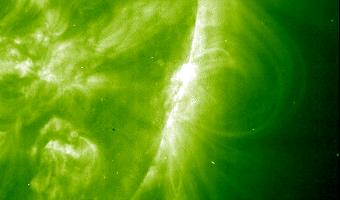 On Nov. 4, 2003, this solar flare saturated the X-ray detectors on several Sun-observing spacecraft.NASA/ESA/SOHO
On Nov. 4, 2003, this solar flare saturated the X-ray detectors on several Sun-observing spacecraft.NASA/ESA/SOHO
Radiation Storms
Solar eruptions can accelerate charged particles — electrons and protons — into space at incredibly high speeds, initiating a radiation storm.
The fastest particles travel so quickly they can zip across roughly 93 million miles from the Sun to Earth in about 30 minutes or less.
High-speed particles from solar eruptions can sometimes:
- get past most of Earth’s magnetic defenses, following Earth’s magnetic field lines toward the north and south poles, where they enter our atmosphere and possibly even hit the ground (but don’t harm anyone on the ground).
- knock electrons off of atoms and molecules in our atmosphere (ionizing them), altering high-frequency radio communication.
- pierce deep into satellite hardware, degrading solar panels and damaging circuits.
- pass through human tissue, posing radiation risks to astronauts in space or to crewmembers and passengers in high-flying polar aircraft.
Video: A solar storm in January 2012 released a flurry of energetic particles that looked like snow when they hit the detectors of the Solar and Heliospheric Observatory (SOHO).
Coronal Mass Ejections
A coronal mass ejection (CME) is an enormous cloud of electrically charged gas, called plasma, that erupts from the Sun. A single coronal mass ejection can blast billions of tons of material into the solar system all at once.
CMEs occur in the outer atmosphere of the Sun, called the corona, and often look like giant bubbles bursting from the Sun.
Video: Several coronal mass ejections erupted from the Sun between Oct. 25 and 28, 2013. This movie superimposes an extreme ultraviolet view of the Sun from the Solar Dynamic Observatory (center) on a visible-light view of the solar corona from the Solar and Heliospheric Observatory. Credit: NASA/ESA/SOHO/SDO
CMEs can detonate in different directions and move at different speeds.
The fastest ones travel at millions of miles per hour. When directed at Earth, CMEs can reach our planet in as little as 15 hours, while the slowest ones can take several days to arrive.
As they billow away from the Sun, fast CMEs can sweep up and accelerate any charged particles ahead of them, potentially increasing the intensity or risk of a radiation storm.
CMEs carry not only charged particles but intense magnetic fields. With the right conditions, CMEs can trigger strong geomagnetic storms when they reach Earth.
When they interact with Earth's magnetic environment, CMEs can:
- induce electrical currents that flow through power grids, potentially damaging components such as transformers, relays, and circuit breakers, leading to power outages.
- temporarily heat up Earth’s upper atmosphere, causing it to swell and increase drag on some Earth-orbiting satellites, which makes the satellites slow down and lose altitude.
- bombard Earth with charged particles that interact with atoms and molecules in Earth’s atmosphere to create the aurora borealis and australis (northern and southern lights).
Solar Activity Cycle
Solar storms and their related phenomena all wax and wane with the Sun’s 11-year cycle of activity. Such events are more common during solar maximum (or peak of the solar cycle) but are less frequent during solar minimum (or low point of the cycle).
Sunspots, or dark “blemishes” on the Sun, also increase during solar maximum and mark magnetically active regions on the Sun, which give rise to solar eruptions. When a large group of sunspots or a particularly active region on the Sun comes into view, it’s a good time to be on the lookout for solar storms that could be headed our way.
How NASA Studies Solar Storms
-
NASA’s fleet of heliophysics spacecraft orbit in various locations around the solar system to study the Sun’s activity, solar explosions, and the effects on Earth and other planets.
The NASA/ESA (European Space Agency) Solar and Heliospheric Observatory (SOHO), NASA’s Solar Dynamics Observatory (SDO), and NASA’s Solar Terrestrial Relations Observatory (STEREO) monitor sunspots and active regions on the Sun from different locations in space. They also observe coronal mass ejections and other material that escape the Sun into the solar system.
Meanwhile, NASA’s Parker Solar Probe routinely gets close enough to “touch” the Sun, passing through our star’s outer atmosphere (or corona) and getting regular, up-close looks at material as it leaves the Sun.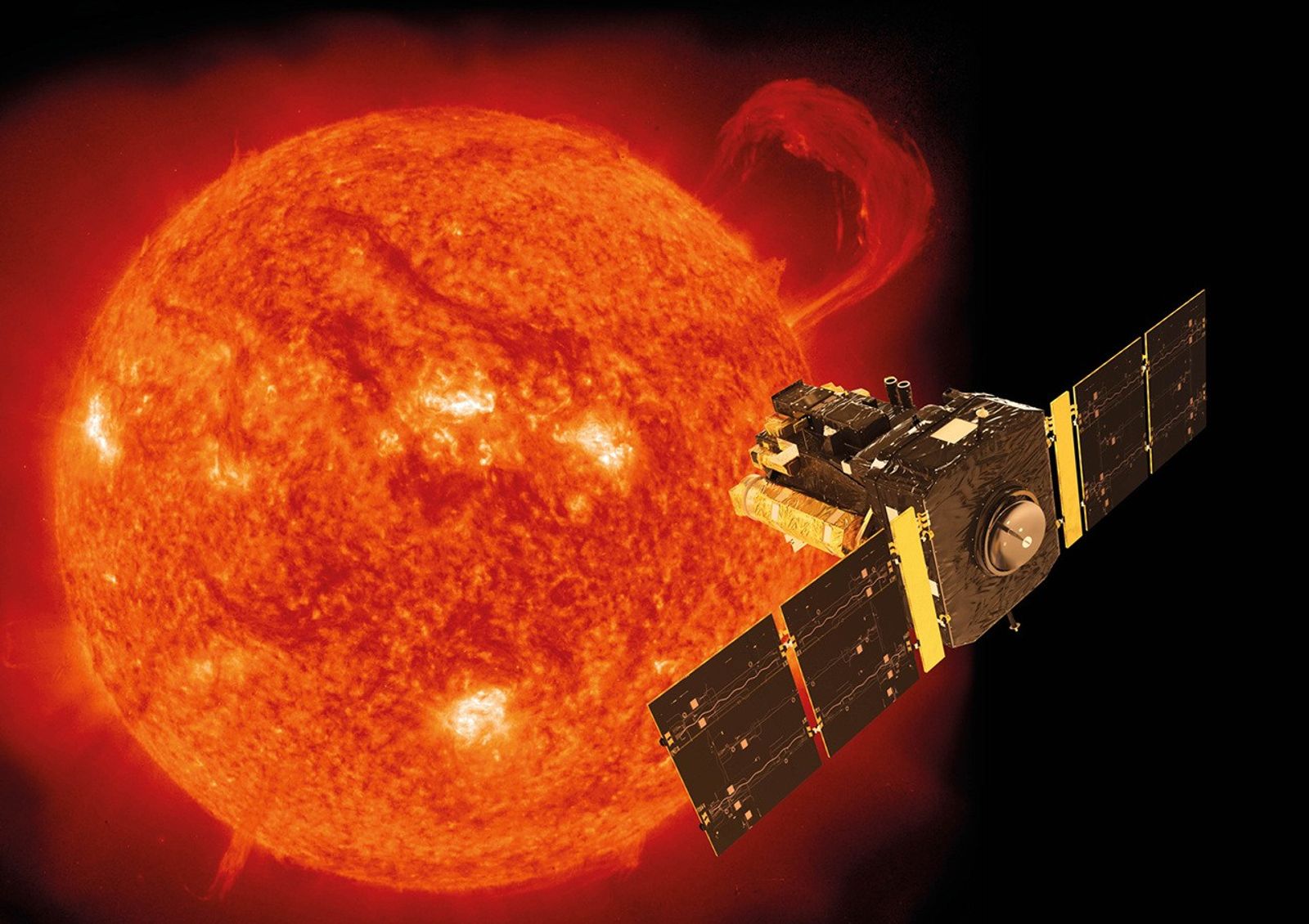 The SOHO mission has been studying solar activity since its launch in December 1995.NASA
The SOHO mission has been studying solar activity since its launch in December 1995.NASA -
NASA’s Magnetospheric Multiscale Mission (MMS) and Time History of Events and Macroscale Interactions during Substorms (THEMIS) spacecraft help investigate how the Sun influences Earth’s magnetosphere.
NASA missions in Earth orbit, such as the Global-scale Observations of the Limb and Disk (GOLD) and Atmospheric Waves Experiment (AWE), study the Sun’s influence on our atmosphere.
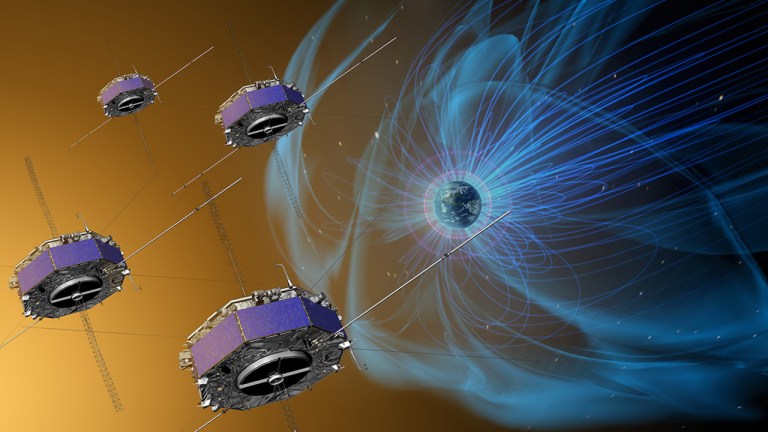 MMS uses four spacecraft to investigate how the magnetic fields of the Sun and Earth connect and disconnect, explosively transferring energy from one to the other.NASA/GSFC
MMS uses four spacecraft to investigate how the magnetic fields of the Sun and Earth connect and disconnect, explosively transferring energy from one to the other.NASA/GSFC -
Near the Moon, two THEMIS-ARTEMIS (Time History of Events and Macroscale Interactions – Acceleration, Reconnection, Turbulence and Electrodynamics of the Moon’s Interaction with the Sun) spacecraft study the lunar space environment — influenced by both the Sun and Earth’s magnetosphere.
The Radiation Assessment Detector (RAD) instrument on NASA’s Curiosity rover studies radiation on the surface of Mars, while the soon-to-be-launched Escape and Plasma Acceleration and Dynamics Explorers (ESCAPADE) mission aims to learn more about the Sun’s effects on the Martian atmosphere and magnetosphere.
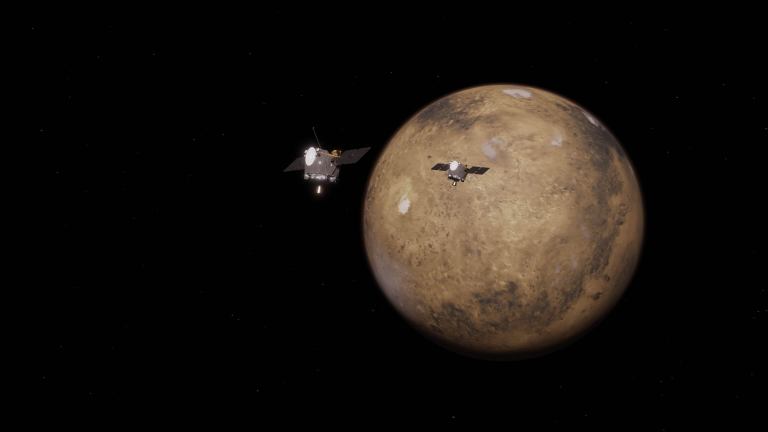 Using two identical spacecraft, NASA's ESCAPADE mission is designed to investigate the effects of solar storms on the Martian magnetosphere and atmosphere.NASA/Rocket Lab
Using two identical spacecraft, NASA's ESCAPADE mission is designed to investigate the effects of solar storms on the Martian magnetosphere and atmosphere.NASA/Rocket Lab -
Get Involved!
There are participatory projects that you can get involved with to help NASA better understand solar storms, such as Aurorasaurus where you can help scientists investigate when and how the Sun’s activity sparks colorful auroras around the world.
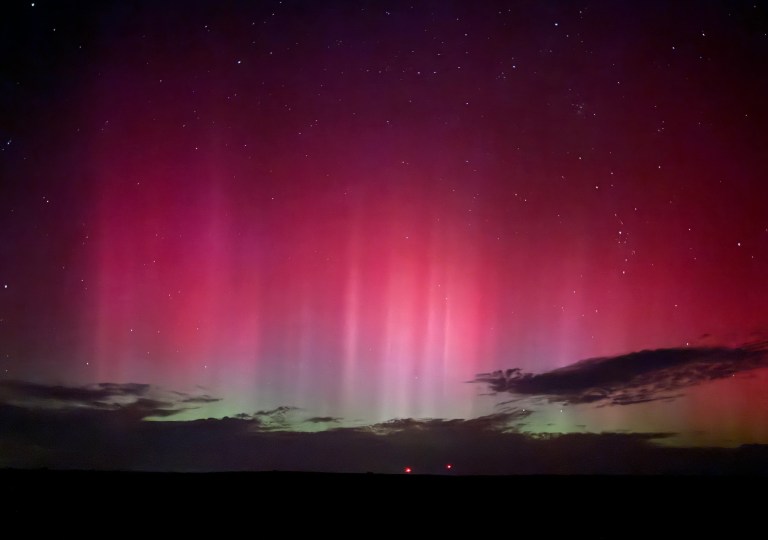 Auroras glow over Utah in 2024.NASA/Bill Dunford
Auroras glow over Utah in 2024.NASA/Bill Dunford



